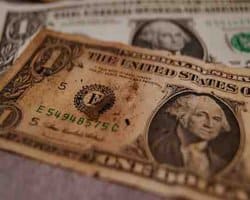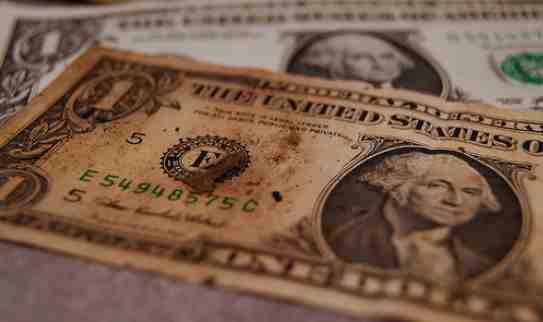Paper money, such as dollar bills, gradually become dirtier and dirtier as they gather grime, fall onto streets and sidewalks, and eventually get selected by special machines for the shredder.
Scientists from Spectra Systems Corporation and Brown University reported in the journal Industrial & Engineering Chemistry Research that a new way of literally laundering paper money could save billions of dollars and significantly reduce the environmental impact of disposing of banknotes.
Andrei Smuk and Nabil M. Lawandy explain that replacing old currency is a progressively growing problem. When banknotes become too grimy central banks discard them and replace them with brand new bills.
Treasuries worldwide print nearly 150 billion new bills annually at a cost of nearly $10 billion. They also dispose of approximately 150,000 tons of old, dirty banknotes.
Human sebum reduces the lifespan of paper money
The main cause of banknote deterioration is human sebum, an oily, waxy substancs found on human skin. Excess sebum on the skin also causes acne during adolescence and early adulthood.
During a banknote’s lifespan, which can range from three to fifteen years depending on the denomination, sebum builds up on its surface and reacts with oxygen in the air, eventually taking on a yellowish hue.
Lawandy and colleagues set out to determine whether they could wash the sebum out of the banknotes in order to make them last longer.
Human sebum reacts with oxygen in the air, which gives the banknote that yellowish hue.
SCCO cleans paper money and conserves its security features
They used “supercritical” CO2 (SCCO2), which acts like a gas and also a liquid and is used widely in several types of cleaning applications.
The researchers found that SCCO2 removed oxidized sebum and motor oil from the banknotes, as well as destroying common bacterial colonies, leaving their holograms, phosphorescent inks and other security features intact.
In an abstract in the journal the authors concluded:
“Measurements of note soiling distributions on a banknote sorting machine running at 10 banknotes per second showed a significant shift in soiling levels after cleaning, supporting the claim that processing of SCCO2-cleaned notes would result in significantly fewer notes being classified as unfit due to soiling and shredded.”


